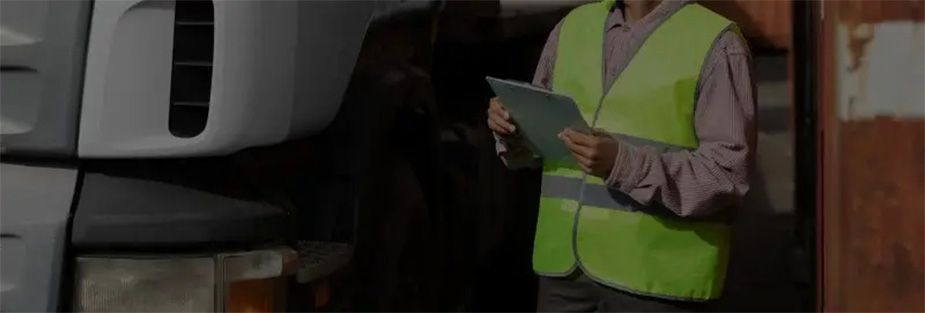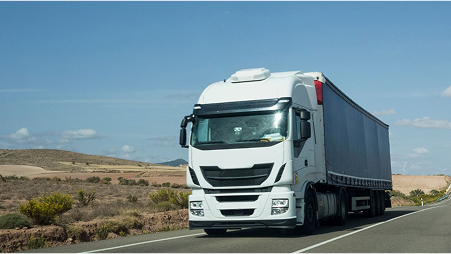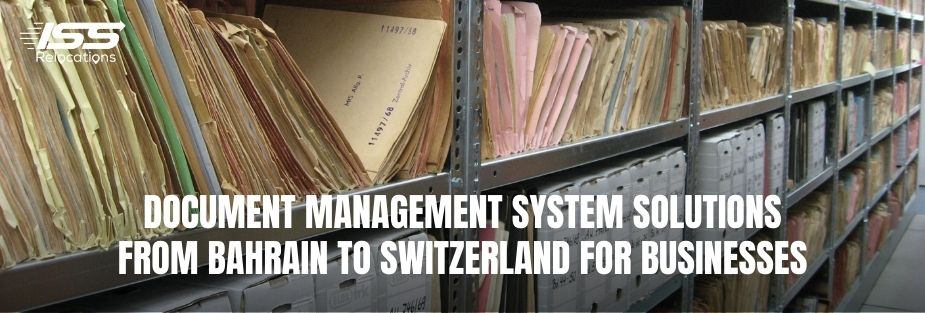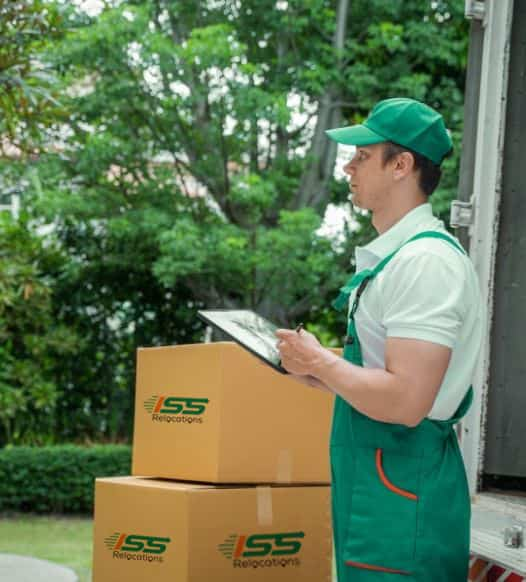
How to Ensure Safe and Secure Freight Forwarding
Freight forwarding is the process of organizing and arranging the transportation of goods from one location to another. It involves the coordination of various activities, such as packaging, labelling, documentation, and customs clearance. Safe and secure freight forwarding is crucial for businesses and individuals who want to transport their goods in a timely and efficient manner. Choosing a reliable freight forwarder is essential to ensure that the transportation of goods is done safely and securely. In this blog post, we will discuss the importance of safe and secure freight forwarding and highlight the significance of choosing a reliable freight forwarder. We will also cover the different aspects of freight forwarding, including understanding freight forwarding, choosing a reliable freight forwarder, ensuring safe and secure freight forwarding, preparing for freight forwarding, and best practices for safe and secure freight forwarding.
Need Trusted Forwarding?
Ship confidently with safe and secure freight forwarding guidance
Chapter 1: Understanding Freight Forwarding
Freight forwarding is a complex process that involves several different activities, such as transportation, documentation, customs clearance, and insurance. Freight forwarders are individuals or companies that specialize in organizing and arranging the transportation of goods from one location to another. They act as intermediaries between shippers and carriers and are responsible for ensuring that the goods are transported safely and efficiently. There are several types of freight forwarding services, including air freight, sea freight, road freight, and rail freight. Each of these services has its benefits and drawbacks, and the choice of service depends on the type of goods being transported and the destination.
Using freight forwarding services offers several benefits. Firstly, it allows businesses and individuals to focus on their core activities and leave the transportation of goods to the experts. Secondly, freight forwarders have a network of carriers and agents that enables them to negotiate better rates and provide faster transit times. Thirdly, they are knowledgeable about the documentation and customs requirements of different countries, which can save time and reduce the risk of errors.
Chapter 2: Choosing a Reliable Freight Forwarder
Choosing a reliable freight forwarder is essential to ensure safe and secure freight forwarding. There are several factors to consider when choosing a freight forwarder. Firstly, it is essential to choose a freight forwarder that has experience in handling the type of goods being transported. Different types of goods require different handling procedures, and it is crucial to choose a freight forwarder that has the necessary expertise. Secondly, it is essential to choose a freight forwarder that has a network of carriers and agents in the destination country. This ensures that the goods are transported efficiently and that there are no delays at customs. Thirdly, it is crucial to choose a freight forwarder that has the necessary insurance and liability coverage. This protects the shipper in case of loss or damage to the goods during transportation.
Researching and vetting potential freight forwarders is crucial to making an informed decision. One way to research freight forwarders is to check their online reviews and ratings. It is also essential to ask for references from past clients and to check their certifications and licenses. When vetting potential freight forwarders, it is essential to ask questions about their experience, network, and insurance coverage. This ensures that the freight forwarder is reliable and capable of providing safe and secure freight forwarding services.
Get Expert Assistance!
Chapter 3: Ensuring Safe and Secure Freight Forwarding
Ensuring safe and secure freight forwarding is crucial to avoid potential risks and challenges associated with transportation. Freight forwarding involves several risks, such as damage to goods, theft, delays, and customs issues. These risks can be mitigated by taking several measures. Firstly, it is essential to properly package and label the goods to prevent damage during transportation. Secondly, it is important to choose a carrier that has a track record of safe and secure transportation. Thirdly, it is essential to have the necessary insurance and liability coverage to protect against loss or damage to goods during transportation.
Insurance and liability coverage
Having the right insurance and liability coverage is an essential part of ensuring safe and secure freight forwarding. Freight forwarders should have appropriate insurance coverage to protect against loss or damage to goods during transportation. It is important to choose a freight forwarder who has liability coverage, including marine insurance, cargo insurance, and errors and omissions insurance.
Marine insurance covers the risks associated with sea transportation, including loss or damage to goods due to accidents or weather conditions. Cargo insurance covers the loss or damage of goods during transportation, including damage caused by accidents, theft, or natural disasters. Errors and omissions insurance covers the freight forwarder’s liability for errors or omissions made during the transportation process.
It is crucial to verify the coverage provided by the freight forwarder’s insurance policies and ensure that they are sufficient to cover the value of the goods being transported. Freight forwarders should also provide their clients with copies of their insurance policies and explain the coverage and limitations of each policy.
Mitigating risks and ensuring safe and secure freight forwarding
Aside from insurance and liability coverage, there are several other measures that can be taken to mitigate risks and ensure safe and secure freight forwarding. One of the most important is proper packaging and labelling of goods. Freight forwarders should ensure that goods are properly packaged to prevent damage during transportation. They should also be labelled with clear and accurate shipping labels, including the name and address of the consignee, the weight and volume of the shipment, and any other necessary information.
Choosing the right carrier is also essential for safe and secure freight forwarding. Freight forwarders should choose carriers that have a track record of safe and secure transportation. This includes carriers with modern equipment, experienced drivers, and a strong safety culture. Freight forwarders should also ensure that carriers are properly licensed and insured to transport goods.
In addition, freight forwarders should stay up-to-date with the latest regulations and customs requirements. Failure to comply with these requirements can lead to delays, fines, and other penalties. Freight forwarders should work closely with their clients to ensure that all necessary documentation is in order, including bills of lading, commercial invoices, and export/import permits.
Chapter 4: Preparing for Freight Forwarding
Proper preparation is essential for smooth and efficient freight forwarding. This includes understanding the documentation required for transportation and ensuring that all necessary paperwork is in order. Freight forwarders should also work closely with their clients to identify any special requirements or restrictions for their shipments.
The first step in preparing for freight forwarding is to identify the goods that need to be shipped. Freight forwarders should work with their clients to determine the volume, weight, and dimensions of the shipment. This information will be used to calculate the transportation costs and determine the most appropriate mode of transportation.
The next step is to prepare the necessary documentation for transportation. This includes bills of lading, commercial invoices, and export/import permits. Freight forwarders should work with their clients to ensure that all necessary documentation is in order and that any special requirements or restrictions are identified and addressed.
Finally, it is important to properly package and label the goods for transportation. Freight forwarders should work with their clients to ensure that goods are properly packaged to prevent damage during transportation. They should also be labelled with clear and accurate shipping labels, including the name and address of the consignee, the weight and volume of the shipment, and any other necessary information.
Chapter 5: Best Practices for Safe and Secure Freight Forwarding
In addition to the measures discussed in earlier chapters, there are several best practices for safe and secure freight forwarding. These include effective communication and collaboration between the freight forwarder and their clients, proper packing and labelling of goods, and effective tracking and monitoring of shipments.
Effective communication and collaboration between the freight forwarder and their clients is essential for safe and secure freight forwarding. This involves establishing clear channels of communication and sharing relevant information about the shipment, such as the type of goods, their value, and any special handling instructions. The freight forwarder should also keep the client informed of any updates or changes to the shipment’s status, such as delays or delivery dates.
Proper packing and labelling of goods is another best practice for safe and secure freight forwarding. Goods should be packaged appropriately to prevent damage during transportation. Fragile items, for example, should be packed in protective materials, and liquids should be packaged in leak-proof containers. Labels should be clear and accurate, indicating the contents of the shipment, handling instructions, and any hazardous materials.
Effective tracking and monitoring of shipments is also crucial for safe and secure freight forwarding. Freight forwarders should use modern tracking technologies such as GPS, RFID, and barcode scanning to monitor the shipment’s location and status in real-time. This allows them to identify any potential issues or delays and take corrective action as necessary.
Finally, it is important to choose a freight forwarder that follows best practices for safe and secure freight forwarding. This means working with a reputable and experienced freight forwarder that has a proven track record of delivering goods safely and on time. It is also essential to verify the freight forwarder’s credentials and certifications, such as their licensing and insurance coverage, to ensure they are qualified to handle the shipment.
Conclusion
In conclusion, safe and secure freight forwarding is essential for ensuring the smooth and efficient transportation of goods across borders. Choosing a reliable and experienced freight forwarder is critical to mitigating risks and ensuring the safe delivery of goods. By following best practices for safe and secure freight forwarding, such as effective communication, proper packaging and labelling, and real-time tracking and monitoring, businesses can achieve a seamless and worry-free shipping experience. At ISS Relocations, we understand the importance of safe and secure freight forwarding. As a leading relocation company, we offer a comprehensive range of freight forwarding services that are tailored to meet our clients’ needs. Our experienced team of freight forwarders is committed to delivering goods safely and on time, using best practices and modern tracking technologies. Contact us today to learn more about our freight forwarding services and how we can help you transport your goods across borders safely and securely.
Plan Stress-free Move with Top Moving Company in UAE - ISS Relocations

Frequently Asked Questions
What is the purpose of freight forwarding?
The purpose of freight forwarding is to manage the logistics of shipping goods from one location to another, including arranging transportation, handling customs, and ensuring secure delivery. ISS Relocations offers safe and secure freight forwarding services, ensuring that your goods are delivered efficiently and without issues.
What are the risks of a freight forwarder in Dubai?
The risks of a freight forwarder in Dubai include delays due to customs, transportation disruptions, or damage to goods during transit. ISS Relocations minimizes these risks by offering reliable, secure, and experienced freight forwarding services, ensuring safe delivery and efficient handling.
What are the two basic types of freight forwarders?
The two basic types of freight forwarders are: 1) NVOCC (Non-Vessel Operating Common Carrier), which manages shipping but doesn’t own vessels, and 2) Freight Brokers, who act as intermediaries between clients and carriers. ISS Relocations offers both types of services, ensuring efficient and secure freight forwarding solutions for your needs.
What is SLI in freight forwarding?
SLI (Shipper’s Letter of Instruction) is a document that provides instructions from the shipper to the freight forwarder regarding the shipment’s handling, route, and delivery details. ISS Relocations ensures all necessary documentation, including SLI, is correctly handled, guaranteeing safe and secure freight forwarding services.
What are the steps in freight forwarding?
The steps in freight forwarding include 1) Booking transportation, 2) Preparing and packing goods, 3) Documentation (like customs clearance), 4) Transporting goods, and 5) Delivery to the final destination. ISS Relocations handles all steps in the process, ensuring smooth, safe, and secure freight forwarding from start to finish.
How is freight forwarding?
Freight forwarding is a complex process that involves managing the shipment of goods across different modes of transportation (air, sea, land). ISS Relocations offers secure and efficient freight forwarding services, ensuring your items are handled professionally, safely, and delivered on time.
What is risk management in freight operations in Dubai?
Risk management in freight operations in Dubai involves identifying, assessing, and mitigating potential risks such as delays, damage, or theft. ISS Relocations provides expert risk management services, ensuring your goods are protected with the right insurance, secure packaging, and reliable shipping methods, minimizing any risks during transportation.
Moving Company - Recent Blog
Stay informed and prepared for your next move with our latest blogs on moving services in the UAE. From expert packing tips to international relocation guides, ISS Relocations brings you up-to-date insights to make your moving experience smoother, safer, and stress-free.










